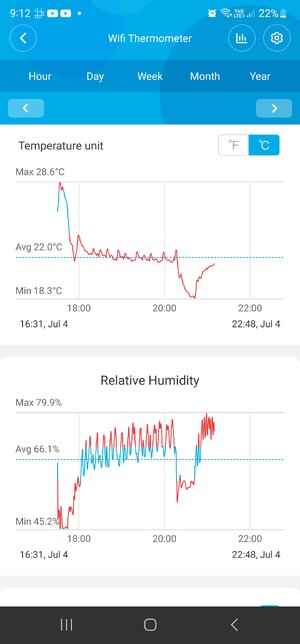Getting the environment right can be a real challenge bro. You need to mix the cold incoming air with the air inside to warm it up, but in the meantime you also need to extract all the spent air and humidity the plants expel. While doing that keeping the temperature and humidity in the right zone...
If you want to test out your sensor, the best thing todo is place a analog mercury type thermometer next to the sensor and compare. The humidity is a bit more work, but can be tested as follows. Take ordinary table salt and fill a small shotglas or something with it 3/4 of the way up. Next, wet the salt until it can hold no more water. You'll see the water start forming on the bottom of the shotglas. Place the shotglass with the salt in, inside a plastic bag and place the sensor next to it. Close off the bag with a clip or something and wait.
In the example below I have NaNO² selected, which I use as a replacement for them Boveda packs. But I digress...above that is NaCl, which is the table salt. It should have a humidity of 75% between 20°C/68°F and 40°C/104°F.
View attachment 1610786
So after half an hour you can check the humidity inside the bag and if you are between the above temperature and you are reading 75%, then that means your reading is A-ok. If it reads, ie. 72%. Then you know you need to add 3% to every measurement. Some more expensive models have a calibration of some sort, but it always works like the example above.



